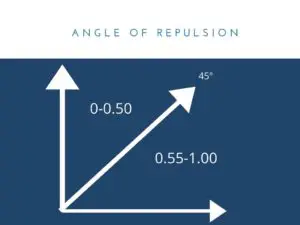When I first competed in gymnastics, there was one skill that confused the heck out of me. I just couldn’t understand why I got the scores I did. What skill was it? The handspring vault!
The handspring vault is the compulsory vault at Levels 4 and 5. It is the first vault gymnasts perform over the vault table. And often, the technique and scoring is a mystery to gymnasts, parents, and new coaches. Even as a seasoned coach, it can be tough to understand what the judges are looking for.
Today I will delve into some of the most important aspects of the handspring vault, from a judging perspective, and give a few pointers that have helped me in the past.
But first, a little background on the vault. There are three phases to any vault: preflight, support phase, and postflight. If a deduction can be taken “in each phase”, it means in each of these three phases. The landing has its own set of deductions, and is not considered a vault phase. Each vault begins with a run down the runway, but the run is not considered part of the vault, and it is not judged (with the exception of Level 3 vault).
Here’s a video of a well-performed handspring vault.
1. Start with a strong run and hurdle
The run is not judged at any level except Level 3, but it is still a very important part of the vault. Many times, I can tell what the vault will look like just from watching the run. It’s that important! Without a strong run, the vault will be slow and low.
So what should the run look like? The gymnast should accelerate as she moves down the runway. She should have a slight forward lean, to continue her momentum forward. She should maintain her running speed as she approaches the springboard. If she slows down, she will lose all the momentum she just gained by running fast down the length of the runway.
The transition between the run and the vault is marked by the hurdle. The hurdle should be quick, and relatively low to the ground. Many coaches will teach the gymnast to perform a backward arm circle during the hurdle, in order to get the arms moving overhead as she initiates the vault.
When the gymnast contacts the board, she should have a slight backward lean, to transfer her forward momentum upward as she inverts. Her arms should be in front of her, moving toward overhead as she reaches toward the table.
2. Maintain a tight, straight body
From the time the gymnast hits the springboard, she should maintain a tight, straight body position. The power and rotation are created by the run, hurdle, and, once she touches the table, the block through the shoulders. The gymnast’s body should not need to change position, or become segmented, to execute the handspring vault.
After the gymnast hits the board, this is when the judging starts. Her body should be straight from shoulders to feet. If she is piked, she can lose up to 0.50 in each phase of the vault. If she is arched, she can lose up to 0.30 in each phase. The knees should be straight (up to 0.30 each phase), toes pointed (up to 0.10 each phase), and feet together (up to 0.20 each phase). Her head should be in line with her body (up to 0.10 each phase). She is expected to maintain this straight body position until she lands on the mat.
3. Quick, strong block through the shoulders
The “block” is the part of the vault in which the gymnast leaves the table, transitioning from the support phase of the vault to the postflight. Block means to push off the table, and the block generates height and distance for the vault. Height and distance are some of the bigger deductions in the handspring vault, with the height deduction set at up to 0.50, and distance is up to 0.30.
The block should be initiated through the shoulders, with the gymnast keeping her arms straight. If the arms are bent, she can lose up to 0.50, and if the arms are so bent that the head contacts the table, she will lose 2.00! Good shoulder and head alignment are also expected during this phase of the vault, with deductions of up to 0.10 for incorrect head alignment and up to 0.20 for incorrect shoulder alignment.
4. Get off the table by vertical
The angle that the gymnast leaves the table is a direct result of the block we just talked about. It’s a very important part of the vault because it, in turn, affects the gymnast’s ability to generate height and distance, and to progress from the handspring to more difficult vaults.
The gymnast can lose up to 1.00 for failure to leave the table by vertical. In addition, she can be deducted up to 0.50 if her hands are in contact with the table too long (too long in support). So as you can see, it is vitally important for the gymnast to get off the table quickly!
The deductions for angle of repulsion are graded, based on how late the hands leave the table. If she is off by 45°, the deduction is 0.05-0.50. After 45°, the deductions creep into the 0.55-1.00 range. The deduction is taken based on the body angle when the hands leave the table.
After looking at the overall trajectory of the vault, the height and distance, and the power the gymnast generates, the judge may decide to take a deduction for dynamics. Dynamics is the overall quickness and power that occurs during the vault. A vault that stays on the table for a long time, that does not produce much height, or appears sluggish will incur a deduction for dynamics. The dynamics deduction is up to 0.30, with the maximum deduction occurring for vaults that seem to barely make it over the table, or vaults that require assistance of the coach.
5. Good posture and control on landing
If you listen to a gymnastics broadcast on TV, you will always hear the commentators talking about how important it is to stick your landing. (If you HAVEN’T heard them say that, you haven’t been watching enough gymnastics on TV!) While stuck landings are important, especially at the NCAA level, there are many other aspects of the vault that are at least as important.
As far as landings go, posture on landing is a common deduction that can be taken in addition to steps or other body movements. Gymnasts can lose up to 0.20 for posture on landing, and once they reach Levels 6 and 7, the posture deduction becomes 0.50. If the gymnast performs a deep squat upon landing, she can be deducted up to 0.30. It’s a really good idea for gymnasts to learn to land with their chest and head up, as it will serve them well in the higher levels. Posture may not be the biggest deduction, but coupled with landing deductions such as steps and wobbles, it can definitely add up.
Control on the landing can include steps, hops, arm movements, and additional trunk movements to maintain the landing position. All of these can result in deductions, depending on their severity. A slight hop or foot adjustment can elicit a deduction of up to 0.10. A regular-sized step is a 0.10 deduction (up to 0.40 total for steps), and a large step or jump is a 0.20 deduction (also maximum up to 0.40). A deduction of up to 0.10 can be applied for extra arm movements, along with up to 0.20 for additional trunk movements. A gymnast can also incur a deduction of up to 0.30 for directional errors if the vault lands off to the side.
Gymnasts can also be deducted for the position of the feet upon landing. If the feet land more than hip-width apart, the deduction is 0.10. If the feet are apart (less than hip-width), but the heels never close, a deduction of 0.05 is applied. Staggered feet can result in a deduction of up to 0.10.
To sum it up, a great handspring starts with a strong run. The gymnast must keep a tight, straight body throughout the vault. She must produce a strong block through the shoulders, in order to generate height, distance, and power. The block should occur by vertical. Finally, she should land in control with good posture.
Further Reading
5 Tips for a Great Level 2 Vault
Tips and Resources to Boost Your Level 6/7 Vault Score
The Essential Guide to a Great Vault Run
References
USA Gymnastics Compulsory Handbook, 2021-2029.
